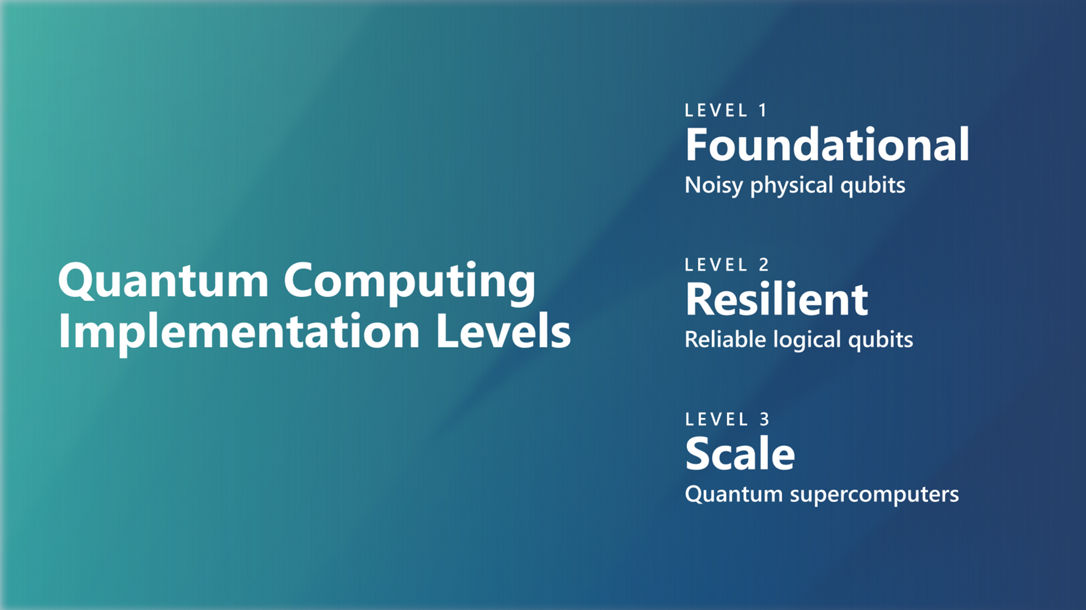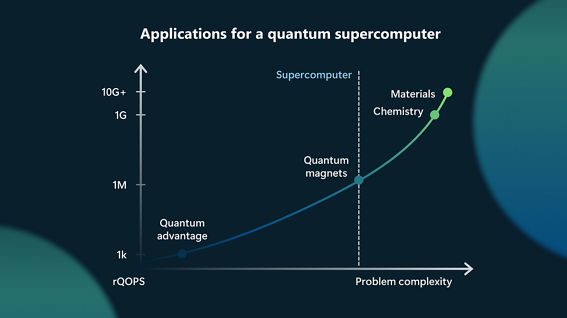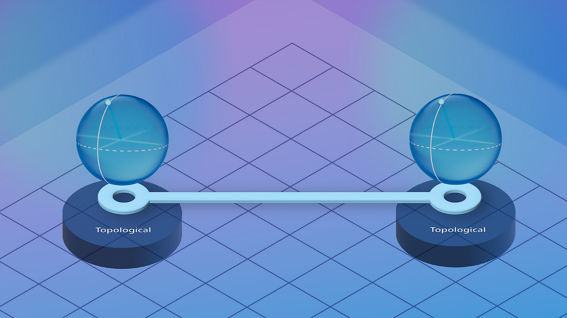As the quantum industry progresses, quantum hardware will fall into one of three categories of Quantum Computing Implementation Levels.
- Level 1—Foundational
Quantum systems that run on noisy physical qubits which includes all of today’s Noisy Intermediate Scale Quantum (NISQ) computers.
Microsoft has brought these quantum machines—the world’s best, with the highest quantum volumes in the industry—to the cloud with Microsoft Quantum including IonQ, Pasqal, Quantinuum, QCI, and Rigetti. These quantum computers are great for experimentation as an-on -ramp to scaled quantum computing.
At the Foundational Level, the industry measures progress by counting qubits and quantum volume.
[continued below]

- Level 2—Resilient
Quantum systems that are operated by reliable logical qubits.
Reaching the Resilient Level requires a transition from noisy physical qubits to reliable logical qubits. This is critical because noisy physical qubits cannot run scaled applications directly. The errors that inevitably occur will spoil the computation. Hence, they must be corrected. To do this adequately and preserve quantum information, hundreds to thousands of physical qubits will be combined into a logical qubit which builds in redundancy. However, this only works if the physical qubits’ error rates are below a threshold value; otherwise, attempts at error correction will be futile. Once this stability threshold is achieved, it is possible to make reliable logical qubits. Even logical qubits will eventually suffer from errors though. The key is that they must remain error-free for the duration of the computation powering the application. The longer the logical qubit is stable, the more complex an application it can run. In order to make a logical qubit more stable (or, in other words, to reduce the logical error rate), we must either increase the number of physical qubits per logical qubit, make the physical qubits more stable, or both. Therefore, there is significant gain to be made from more stable physical qubits as they enable more reliable logical qubits, which in turn can run increasingly more sophisticated applications.
The performance of quantum systems in the Resilient Level will be measured by their reliability, as measured by logical qubit error rates.
- Level 3—Scale
Quantum supercomputers that can solve impactful problems even the most powerful classical supercomputers cannot.
This level will be reached when it becomes possible to engineer a scaled, programmable quantum supercomputer that will be able to solve problems that are intractable on a classical computer. Such a machine can be scaled up to solve the most complex problems facing our society. As we look ahead, we need to define a good figure of merit that captures what a quantum supercomputer can do. This measure of a supercomputer’s performance should help us understand how capable the system is in solving real problems. We offer such a figure of merit: reliable Quantum Operations Per Second (rQOPS), which measures how many reliable operations can be executed in a second. A quantum supercomputer will need at least one million rQOPS.





